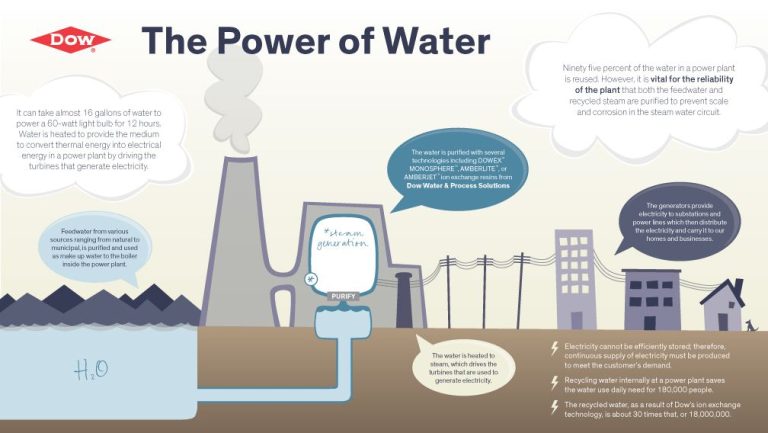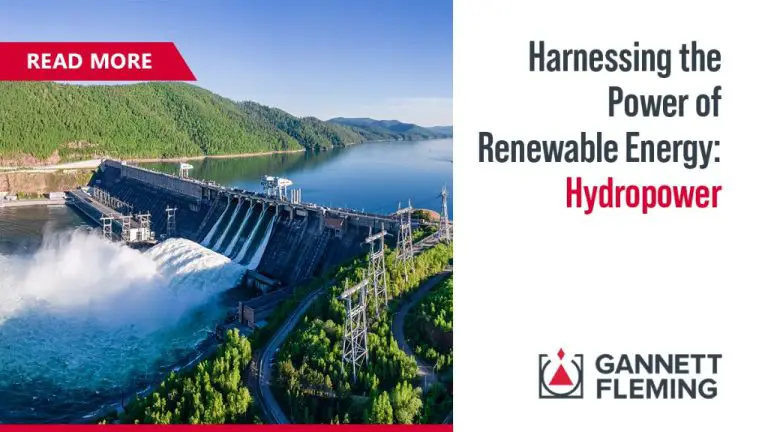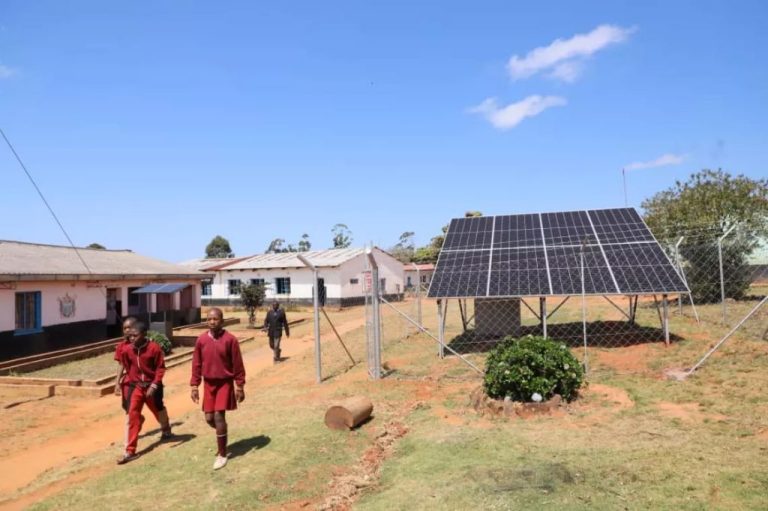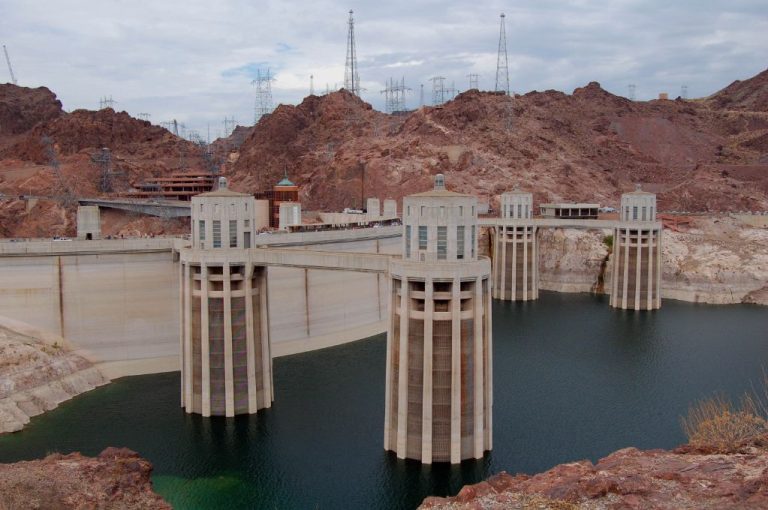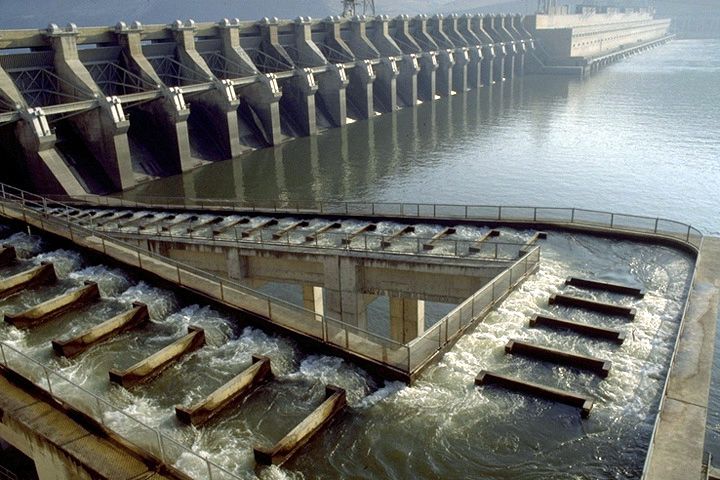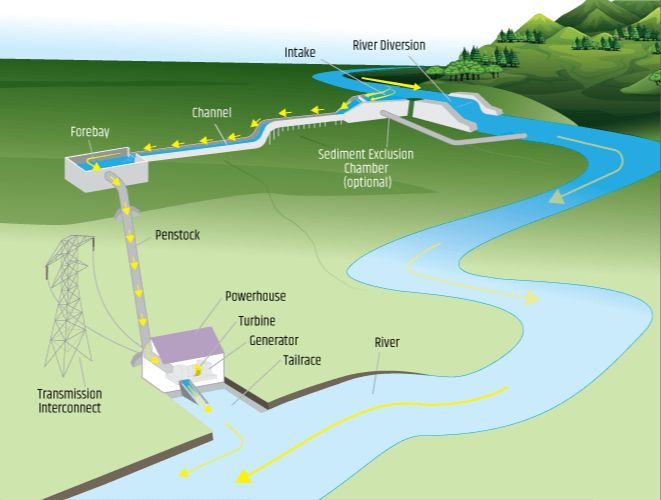What Is The Status Of Azad Pattan Hydropower Project?
The Azad Pattan Hydropower Project is a 700.7 MW run-of-the-river hydroelectric power station being developed on the Jhelum River in Azad Kashmir, Pakistan. The project is located roughly 7 km upstream of Azad Pattan Bridge in the Sudhanoti District. Its purpose is to help meet Pakistan’s increasing electricity demand through clean renewable energy.
The project is being developed by Azad Pattan Power Private Limited, which is owned by China Gezhouba Group Company (CGGC) and Laraib Group. Other partners involved include the Government of Pakistan and the Government of Azad Jammu & Kashmir.
Project Details
The Azad Pattan Hydropower Project is a run-of-river hydroelectric project with an installed capacity of 700.7 MW. It is expected to generate 2.86 billion units of electricity annually. The key components of the project include:
- A 94 meter high and 390 meter long Concrete Gravity Dam on Jhelum River.
- Two underground power houses on each side of the river with four 177 MW Francis turbine units in each.
- A 2.8 km head race tunnel, 3.5m diameter steel lined pressure shafts and 3.3m diameter tail race tunnels.
It utilizes a gross hydraulic head of 100.8 meters and designed discharge of 313 cumecs to generate electricity. Construction began in July 2020 and the project is expected to be commissioned by 2026.
Construction Status
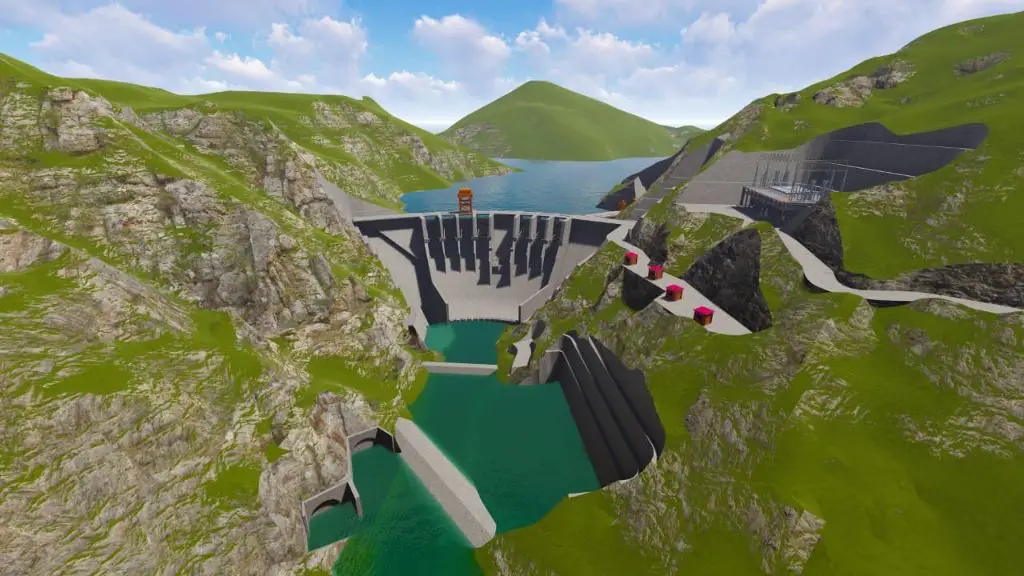
The Azad Pattan hydropower project is currently under construction on the Jhelum River in Azad Kashmir, Pakistan. Major construction on the project began in November 2020 after the Chinese and Pakistani governments signed an agreement to develop the project in July 2020.
As of early 2023, significant progress has been made on construction of the project. Much of the initial infrastructure, including access roads, bridges, offices and housing has been completed. The river diversion tunnel, an important early component, was excavated in 2021. Currently, work is focused on the powerhouse, with excavation underway and foundations being laid.
The Azad Pattan hydropower project has a planned completion date of 2026. Based on the current pace of construction, the project appears on track for on-time completion by 2026. Once finished, the 700 MW hydropower station will provide much-needed renewable energy capacity to Pakistan’s national grid.
(Cited source: Wikipedia Azad Pattan Article (https://en.wikipedia.org/wiki/Azad_Pattan_Hydropower_Project))
Funding
The total cost of the Azad Pattan hydropower project is estimated to be around $1.54 billion. The project is being jointly developed by the governments of Pakistan and China under the China-Pakistan Economic Corridor (CPEC) framework.
The majority of the funding, around $1.35 billion or 88% of the total cost, is coming from Chinese state-owned banks. This includes financing from China’s Export-Import Bank. The remaining $190 million or 12% is being funded by the Private Power Infrastructure Board (PPIB) of Pakistan.
The lead investor and developer for the project is China Gezhouba Group Company Limited (CGGC). Other Chinese state-owned enterprises involved are China Three Gorges Corporation, China Energy Engineering Corporation and China International Water & Electric Corporation.
In December 2020, the government of Pakistan approved a tariff of 8.8207 US¢/kWh for the project’s electricity, which will help provide returns for the Chinese investors over the 30-year concession period.
Challenges
The Azad Pattan hydropower project has faced some delays and obstacles during construction. In November 2022, it was reported that the project was facing issues getting approval from the Planning Commission and other government agencies (Brecorder). The project developers have been working to get bottlenecks cleared to move forward.
In June 2023, Energy China’s head of Pakistan operations Wang Minsheng pointed out challenges faced by foreign investors in Pakistan’s hydropower sector including getting approvals and authorizations from various government agencies. He stated these issues cause delays in project timelines and advised forming a joint working group to help coordinate and communicate (Pakistan Today).
Overall, bureaucratic hurdles and delays in getting government approvals have posed challenges during construction of the Azad Pattan project, causing setbacks to the initial project timeline.
Benefits
The Azad Pattan hydropower project will provide much-needed electricity to help meet Pakistan’s increasing energy demands. Once operational, the project is expected to add 700.7 MW of low-cost, reliable power to the national grid. According to Pakistan government officials, this will help alleviate the energy crisis that has led to frequent blackouts across the country (Xinhua, 2020).
With a growing population and expanding industries, Pakistan’s electricity demand far outstrips supply. Chronic power shortages have hampered economic growth and required load shedding for households. The Azad Pattan project is part of the China-Pakistan Economic Corridor, which aims to develop Pakistan’s energy infrastructure through Chinese investment. Other projects include the Suki Kinari, Karot, and Kohala hydropower plants.
Together, these projects could add over 3,400 MW of capacity. This will help Pakistan reduce its reliance on expensive imported fossil fuels and meet its goal of generating 60% of electricity from indigenous hydropower by 2030 (Power Technology, 2024). The Azad Pattan project alone can provide cheap power to 4 million Pakistani households.
Environmental Impacts
As a run-of-the-river project, the Azad Pattan hydropower project is expected to have relatively low environmental impact compared to large storage dams and reservoirs. The project involves a small impoundment of water that is not anticipated to significantly alter the hydrological regime of the Jhelum river (Azad Pattan Hydropower – Company Profile).
However, some studies have attempted to model the potential impacts of climate change on river flows in the Jhelum basin. One study projected a maximum winter flow increase of around 37-39% at the Azad Pattan site by the 2080s under different climate scenarios, which could exacerbate seasonal flooding (Assessment of Impacts of Climate Change on the Water Resources of Jhelum River Basin, India). Careful dam operations will be required to account for these potential changes in seasonal flows.
The main social impact is likely to be the resettlement of some families living near the project site. The project developers have stated they will follow international standards for resettlement and compensation of affected peoples.
Partners
The Azad Pattan Hydropower Project is being developed through a partnership between multiple organizations:
The lead developer is China Gezhouba Group Company (CGGC), one of the largest construction and engineering companies in China. They have partnered with Laraib Group, a Pakistani company, to form Azad Pattan Power Private Limited (APPL), the special purpose company developing the project.
Other key partners include the Punjab Provincial Government, which has invested $150 million for a share of the project, and Azad Jammu & Kashmir (AJK) Government, which has also invested and holds shares. The project is strategically important for energy development in the region.
The Pakistan Water and Power Development Authority (WAPDA) will act as the power purchaser under a 30-year power purchase agreement. The project is also supported by China’s Belt and Road Initiative and is considered a major China-Pakistan Economic Corridor (CPEC) energy project.
Significance
The Azad Pattan Hydropower Project holds great significance for Pakistan’s energy security and economic development. With an installed capacity of 700 MW, it will provide much-needed electricity to help meet Pakistan’s domestic energy demands (Azad Pattan Hydropower Project). The project is considered essential infrastructure for Pakistan’s power system.
In addition, Azad Pattan strengthens energy cooperation between Pakistan and China. It is a major project under the China-Pakistan Economic Corridor (CPEC) initiative. The project demonstrates continued collaboration between the two countries to develop Pakistan’s power sector. It will help cement the economic partnership between China and Pakistan (Azad Pattan Hydropower Project, Azad Jammu Kashmir, Pakistan).
Future Outlook
Upon completion, the Azad Pattan hydropower project will open the door for more hydroelectric projects in the region. Its successful operation will demonstrate the viability of harnessing the immense hydropower potential of the Jhelum River and its tributaries. With Pakistan’s growing energy demands and push towards renewable sources, additional projects can provide clean electricity to millions more people.
The next likely major hydropower project is the 1,000MW Kohala facility, also on the Jhelum River. Kohala recently achieved financial close and construction will begin soon, slated for completion in 2026. Beyond Kohala, studies and planning are underway for several more projects on the Jhelum and Neelum rivers, which could add over 2,500MW of capacity. These include Jhelum II, Neelum Jhelum II, Neelum Jhelum III, and Neelum Jhelum IV.
The successful completion of Azad Pattan will build confidence in Pakistan’s ability to execute large-scale hydropower projects involving major international partners. It represents a significant milestone in harnessing the country’s estimated 50,000MW of untapped hydro potential. Unlocking this renewable energy source will be key for Pakistan to meet its climate change goals and build a more sustainable electricity generation mix.

